An Introduction to the Majestic Empire of the Mughals
The next travelogue entries refer to the great monuments created by the Mughal emperors in Agra and Jaipur, India. For this reason, it is perhaps timely to provide an introduction to the history of the mighty Mughal Empire.
Although we had visited some of the famous Mughal architectural monuments and gardens during our earlier travels through Pakistan and Indian Kashmir, it was the majestic Mughal legacies of the Red Fort and the Taj Mahal in Agra, and the eclectic blend of Rajasthan and Mughal architecture of Jaipur which left the deepest impressions on us.
In truth Alan and I were somewhat ambivalent about visiting Delhi, Agra and Jaipur. We enjoy, and are used to travelling to "off the beaten track" destinations and we would have to admit that we are not great sightseers. We were concerned that these cities with their famous monuments and forts could be too touristy for us. These sites certainly did have a lot of tourists but in honesty, we found the Mughal architecture simply mind blowing. Since our early childhood, we had seen photographs and read widely about these treasures, but nothing could have prepared us for the majesty and stunning beauty of the Mughal architecture. This was especially the case on our first sighting of the breathtaking splendour of the Taj Mahal at daybreak.
At its peak of control, the massive Mughal empire reigned the Indian subcontinent from AD 1526 to 1757, although officially it survived until 1858 when the British Raj took control. At the height of their power, the Muslim emperors ruled most of the subcontinent from Bengal in the east to Balochistan in the west, Kashmir in the north and the Kaveri Basin in the south - a total of over 3.2 million square kilometers. The emperors were Muslim, and direct descendants of Genghis Khan and the great Tamerlane.
The Mughal empire was founded by Babur who came from present day Ferghana in Uzbekistan. Babur and his army invaded the northern subcontinent, initially superseding the Delhi Sultanate as rulers of northern India and later to rule the vast proportion of India.
Babur was succeeded by his son Humayun, a ruler reported to be kind, intelligent and (for his time) as having a peaceful personality. For fifteen years during the reign of Babur's son Humayun, the empire was overtaken by the Afghan Suri Dynasty led by the very able Sher Shah Suri. The untimely death of Suri and the military incompetence of his successors enabled Humayun to regain power in 1555. However, Humayun died a few months later and was succeeded by his 13 year old son Akbar the Great.
The so called "classic period" of the empire began under Akbar's rule. Under his rule, India enjoyed much cultural and economic progress as well as enhanced religious liberalism. Akbar was not only an accomplished military leader, but was also a just and intelligent ruler and a man of great culture. During this time Mughal expansion was at its greatest and the power and stability of the empire became the dominant force of present day India. For the next further one hundred years, the Mughal rule was maintained by Akbar's successors Jahangir, Shah Jahan and Aurangzeb.
Jahangir ascended to the throne following Akbar's death. He was the eldest son of Akbar. During the first year of his rule, a rebellion against him was organised by his eldest son Khusraw. After subduing and executing nearly 2,000 of the rebels, he then blinded his renegade son as punishment. During Jahangir's rule, the empire remained relatively stable with a strong economy and impressive cultural achievements and revival of Mughal painting. Jahangir spent time in his beloved Kashmir where he died en route there in 1627.
The "golden age' of Mughal architecture and arts was during the reign of Jahangir's son, the fifth Emperor Shah Jahan. Wonderful monuments erected by him include the legendary Taj Mahal, the Agra Red Fort, the Delhi Jama Masjid (mosque) and the Lahore Fort in Pakistan. Shah Jahan however did have a nasty side to him. He secured his position as emperor by executing all male relatives who stood in his way. The Mughal emperor met an equally nasty ending by being imprisoned by his son Aurangzeb in the Red Fort of Agra, tortured by the fact that he himself had converted the fort into a palace which had splendid views over his beloved Taj Mahal.
Under the rule of Aurangzeb, the Empire began to wane. Decaying court life and dissatisfaction among the Hindu population with inflated taxes and religious intolerance weakened the Mughal grip on power. The "emperors" continued to rule up to the First War of Independence in 1739 but by that time however they were emperors without an empire.
The last emperor Bahardur Shah II was overthrown by the British, and the remaining remnants of the empire were seized by the British Raj in 1858.
CHRONOLOGICAL ORDER OF THE MUGHAL EMPERORS OF INDIA
Zahir-ud-Din Muhammad Babur
c. 1483-1530
r. 1526-1530
Nasir-ud-Din Muhammad Humayun
c.1508-1556
r. 1530-1540; 1555-1556
Abul-Fath Jalal-ud-Din Muhammad Akbar
c.1542-1605
r. 1556-1605
Nur-ud-Din-Muhammad Jahangir
c. 1569-1627
r. 1695-1627
Shahab-ud-Din M15uhammad Shah Jahan
c. 1592-1666
r. 1627-1658
Mohi-ud-Din Muhammad Aurangzeb
c. 1618-1707
r. 1658-1707
Introduction to the Mighty Mughal Empire
Monday, July 16, 2012
 Agra, Uttar Pradesh, India
Agra, Uttar Pradesh, India
Other Entries
-
13Another Flight Cancelled - or Chilling at Chilas
Jun 2818 days prior Chilas, Pakistanphoto_camera15videocam 0comment 0
Chilas, Pakistanphoto_camera15videocam 0comment 0 -
14Lone Man with a Rifle: Chilas to Islamabad
Jun 2917 days prior Islamabad, Pakistanphoto_camera22videocam 0comment 0
Islamabad, Pakistanphoto_camera22videocam 0comment 0 -
15Vibrant Exotic Lahore
Jun 3016 days prior Lahore, Pakistanphoto_camera19videocam 0comment 0
Lahore, Pakistanphoto_camera19videocam 0comment 0 -
16"A Love Marriage Sir.....?"
Jul 0214 days prior Amritsar, Indiaphoto_camera14videocam 0comment 0
Amritsar, Indiaphoto_camera14videocam 0comment 0 -
17Kashmir: Tranquility and Terror
Jul 0313 days prior Srinagar, Indiaphoto_camera11videocam 0comment 0
Srinagar, Indiaphoto_camera11videocam 0comment 0 -
18Photo Gallery of Srinagar
Jul 0313 days prior Srinagar, Indiaphoto_camera30videocam 0comment 0
Srinagar, Indiaphoto_camera30videocam 0comment 0 -
19A Police Assault, a Yatra & Zozilla Pass
Jul 0511 days prior Kargil, Indiaphoto_camera22videocam 0comment 0
Kargil, Indiaphoto_camera22videocam 0comment 0 -
20Into Ladakh: "Take Care, Life Has No Spare"
Jul 0610 days prior Alchi, Indiaphoto_camera24videocam 0comment 0
Alchi, Indiaphoto_camera24videocam 0comment 0 -
21Jule (joo-lay) from Ley!
Jul 079 days prior Leh, Indiaphoto_camera13videocam 0comment 0
Leh, Indiaphoto_camera13videocam 0comment 0 -
22Photo Gallery of Leh
Jul 079 days prior Leh, Indiaphoto_camera26videocam 0comment 0
Leh, Indiaphoto_camera26videocam 0comment 0 -
23"Luxury Camping" Or a Rough Night in Sarchu
Jul 106 days prior Sarchu Heights, Indiaphoto_camera32videocam 0comment 0
Sarchu Heights, Indiaphoto_camera32videocam 0comment 0 -
24To Manali: "But Sir, We Have a Flight to Catch..."
Jul 115 days prior Manali, Indiaphoto_camera18videocam 0comment 0
Manali, Indiaphoto_camera18videocam 0comment 0 -
25Magical Manali
Jul 115 days prior Manali, Indiaphoto_camera11videocam 0comment 0
Manali, Indiaphoto_camera11videocam 0comment 0 -
26Mandi Town: Frenetic but Friendly
Jul 133 days prior Mandi, Indiaphoto_camera18videocam 0comment 0
Mandi, Indiaphoto_camera18videocam 0comment 0 -
27Shimla: Birthplace of the Indian Partition
Jul 142 days prior Shimla , Indiaphoto_camera8videocam 0comment 0
Shimla , Indiaphoto_camera8videocam 0comment 0 -
28PRIMATE ALERT! Photo Gallery of Shimla
Jul 142 days prior Shimla, Indiaphoto_camera28videocam 0comment 0
Shimla, Indiaphoto_camera28videocam 0comment 0 -
29Toy Train to Kalka & the Shatabdi Express to Delhi
Jul 142 days prior Delhi, Indiaphoto_camera12videocam 0comment 0
Delhi, Indiaphoto_camera12videocam 0comment 0 -
30Introduction to the Mighty Mughal Empire
Jul 16 Agra, Indiaphoto_camera11videocam 0comment 0
Agra, Indiaphoto_camera11videocam 0comment 0 -
31Majestic Mughul Legacies - Akbar's Tomb & Red Fort
Jul 171 day later Agra, Indiaphoto_camera34videocam 0comment 0
Agra, Indiaphoto_camera34videocam 0comment 0 -
32Majestic Mughal Legacies - The Taj Mahal
Jul 171 day later Agra, Indiaphoto_camera23videocam 0comment 0
Agra, Indiaphoto_camera23videocam 0comment 0 -
33Fatehpur Sikri - "Oh Shit, This is Tooooo Hot!"
Jul 171 day later Fatehpur Sikri, Indiaphoto_camera20videocam 0comment 0
Fatehpur Sikri, Indiaphoto_camera20videocam 0comment 0 -
34Introducing Rajasthan: Land of the Kings
Jul 171 day later Jaipur, Indiaphoto_camera7videocam 0comment 0
Jaipur, Indiaphoto_camera7videocam 0comment 0 -
35The Best Exotic Samode Haveli
Jul 182 days later Jaipur, Indiaphoto_camera17videocam 0comment 0
Jaipur, Indiaphoto_camera17videocam 0comment 0 -
36Hot Forts, Hot Palaces: Amber Fort
Jul 182 days later Jaipur, Indiaphoto_camera27videocam 0comment 0
Jaipur, Indiaphoto_camera27videocam 0comment 0 -
37Hot Palaces: Jal & Hawa Mahals & Pink City Palace
Jul 182 days later Jaipur, Indiaphoto_camera17videocam 0comment 0
Jaipur, Indiaphoto_camera17videocam 0comment 0 -
38Floating to the Call of the Azan
Jul 182 days later Jaipur, Indiaphoto_camera11videocam 0comment 0
Jaipur, Indiaphoto_camera11videocam 0comment 0 -
39Corruption is Rife but That is Life in India
Jul 204 days later Delhi, Indiaphoto_camera18videocam 0comment 0
Delhi, Indiaphoto_camera18videocam 0comment 0 -
40Three Missions in Shanghai
Jul 215 days later Shanghai, Chinaphoto_camera16videocam 0comment 0
Shanghai, Chinaphoto_camera16videocam 0comment 0 -
41Reflections: Restless Lands of Pakistan and India
Jul 226 days later Crowdy Head , Australiaphoto_camera54videocam 0comment 0
Crowdy Head , Australiaphoto_camera54videocam 0comment 0 -
42POSTCRIPT - A Not So Enjoyable Journey....
Nov 21493 days later Crowdy Head , Australiaphoto_camera3videocam 0comment 2
Crowdy Head , Australiaphoto_camera3videocam 0comment 2

 Agra, Uttar Pradesh, India
Agra, Uttar Pradesh, India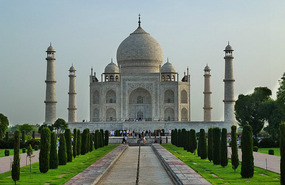
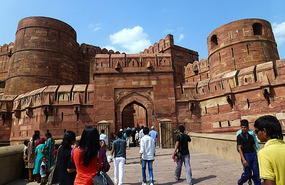
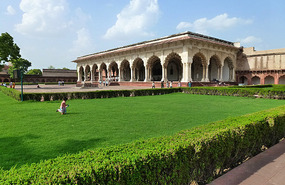
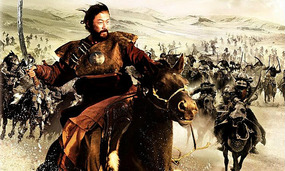


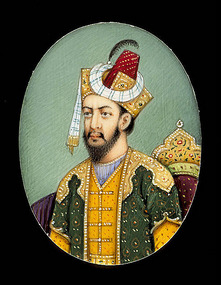

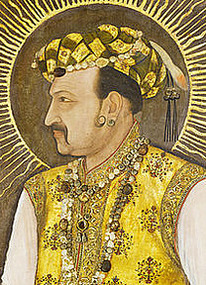
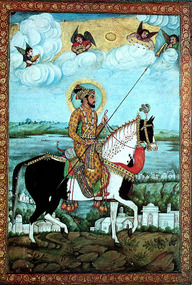
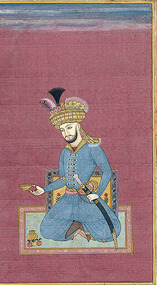




2025-05-22